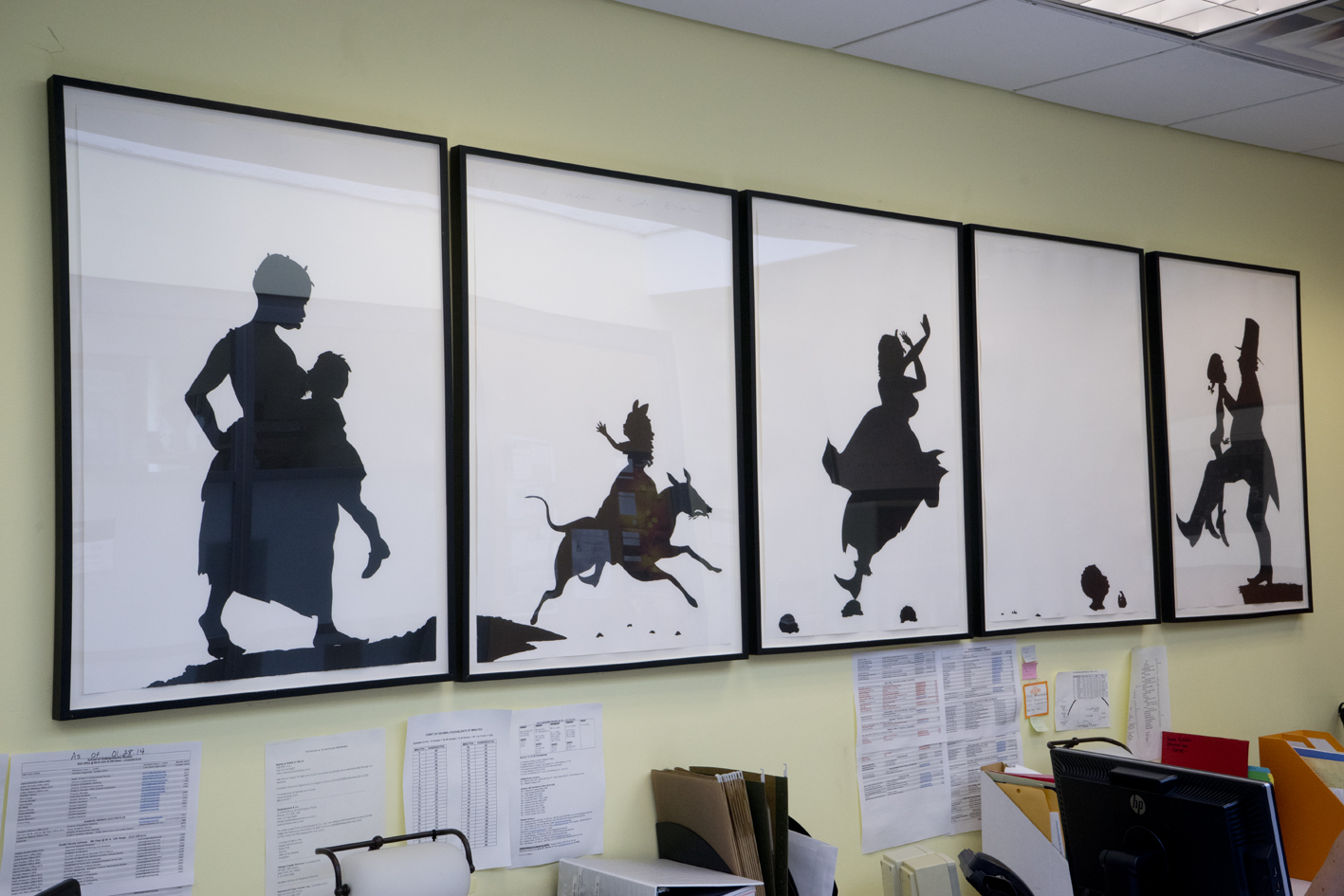
I first encountered Kara Walker’s A Means to An End on my first day of work. It is located just to the left of my desk, so I see it whenever I head in to the office and go back and forth from my desk. When I first saw this piece of art, I was struck by its beauty and simplicity. It seemed almost whimsical, with each black silhouette in a plain white frame appearing as a part of a cartoon. Since I sit right next to the artwork, I sometimes forget that it is even there. Eventually, I am reminded as I see visitor after visitor taken aback by such an impressive piece of art. Not only is Walker’s A Means to An End striking, it is also quite large: each frame is 2 feet by 3 feet and it covers almost the entire wall. I find the artwork intriguing because of its small details, many of which I did not notice when I first saw it.
While some observers love the artwork, others find it macabre and dark. Everyone seems to have a strong reaction to it at first sight. Some people believe the artwork is inappropriate for a university or an office more specifically, because they find the images violent. In one frame, there is a woman stepping on what is later revealed to be human heads. In another, a well-dressed man holds and chokes a very thin girl by her neck.
These images can be shocking to find in an office, but for me, the artwork is striking for this very reason. It is unexpected to find such a large and perhaps dark piece of artwork in an office. I would change the notion that the imagery is too dark for a university.
What and who defines what artwork is appropriate for a university or an office?
What would the artistic and educational value of our art collection be if it was governed by rules that determine what is appropriate or inappropriate for a university?
Can there be a positive function for dark imagery at an educational institution?
Kemi Soyeju
Staff, The New School for Public Engagement

